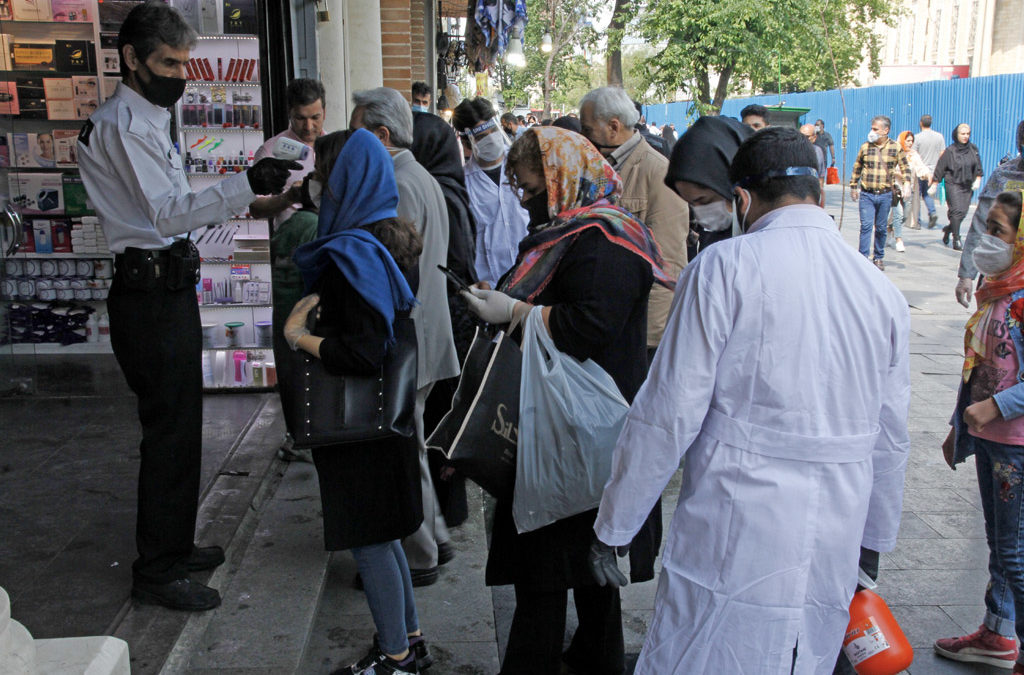The U.S. imposed sanctions on Iran in 1979 following the Islamic revolution and the taking of U.S. hostages. Iranian imports to the U.S. were banned, and more than $12 billion in Iranian assets held in U.S. accounts were frozen. These sanctions were broadened in 1984 when the Department of State designated Iran a state sponsor of terrorism. In 2006 the United Nations Security Council imposed sanctions on arms and weapons-related technology on Iran in response to the development of its nuclear program. In 2012, the Obama administration added to these measures by imposing strict financial sanctions, effectively cutting off Iranian banks from the global financial system. This action shut down the country’s oil exports and deprived the Government and the economy of substantial revenues. These measures served as a major exogenous shock to the Iranian economy, which fell into its first contraction in nearly twenty years.
After a brief period of multilateral sanctions relief related to the implementation of the 2015 nuclear agreement, the Joint Comprehensive Plan of Action, the Trump administration reimposed U.S. sanctions in 2018, moving unilaterally to place Iran’s economy under “maximum pressure.” The magnitude of these economic shocks, and the decade of economic stagnation they underpin, hampered economic growth and constricted the flow of goods and capital. The sanctions also exacerbated the mismanagement and inefficiencies that are characteristic of the Iranian economy. As of this writing, the maximum pressure measures imposed by the Trump administration remain in place.
These sanctions contributed significantly to inflation, which was the intention, making basic goods such as food and medicine less affordable and less available. The specific impacts of sanctions on Iran’s finances and supply chains induced persistent high inflation and led to the diminished welfare of households. This analysis conceptualizes sanctions as an “inflation weapon” causing direct and indirect economic hardships for ordinary Iranians, impeding access to food and medical supplies. The sanctions have led to higher prices, disrupted supply chains, the devaluation of the Iranian Rial, stagnating real wages, and increased poverty and income gaps among Iranians.
Although trade in humanitarian goods is permitted with designated entities, the chilling effect of sanctions and the lack of confidence in Iran’s ability to make payments has hindered such transactions. There are no sanctions on food imports, but the drop in the Rial has seriously affected the affordability of food. Lacking clear access to foreign exchange reserves, the Central Bank of Iran has been unable to provide the hard currency payments that importers demand for the animal feed on which the production of meat, eggs, and dairy products depends. Despite subsidized currency allocations for staples such as wheat, food prices doubled in the two years following the reimposition of sanctions.
The health sector has been hit hard. The negative impact of sanctions on the availability of medicine and medical goods in Iran has been well-documented. A major report published by Human Rights Watch in October 2019 provided a comprehensive assessment of the impact of sanctions on the health of ordinary Iranians[1]. Although Iran was one of the first countries to experience a COVID-19 outbreak, Iranian medical goods importers found themselves at the back of the line in securing face masks, medical gowns, and other protective equipment. Inflationary effects and disruptions to supply chains exposed a major deficiency in the U.S. approach to humanitarian exemptions for sanctions. The dislocations in the global supply of medical goods caused by the COVID-19 epidemic have intensified inflation effects in Iran, resulting in a 67 percent increase in health care costs in the two years following the reimposition of sanctions in November 2018.
Given the role that inflation has played in diminishing the welfare of ordinary Iranians, sanctions reform must address the humanitarian consequences that directly stem from diminished foreign exchange liquidity and fragile supply chains. One option to consider would be managed international oil sales, with the proceeds made available for medical and food purchases. This arrangement could be monitored by third party governments acceptable to both the U.S. and Iran, or by an international humanitarian agency.
At the policy level it is important to recognize that sanctions work best when they provide incentives for governments to carry out reforms, not when they are used as instruments of punishment.
Iran’s willingness to negotiate limitations on its nuclear program in 2015 was induced by the offer to lift sanctions in return for verifiable steps to curb nuclear activities. Can Iran and the U.S. apply the same logic and policy approach now, after the economic damages caused by sanctions and changed politics in each nation in 2021?
If an agreement can be reached between the U.S. and Iran to ease sanctions in exchange for nuclear reduction guarantees, the U.S. could incentivize U.S. businesses and banks and those of allies to engage with the Iranian economy without worrying about sanctions. This would end the “chilly climate” cast over the Iranian economy and stimulate new trade and investment to address Iran’s economic and humanitarian needs.
[1] Human Rights Watch, “Iran: Sanctions Threatening Health,” October 29, 2019, Iran: Sanctions Threatening Health | Human Rights Watch (hrw.org)
Esfandyar Batmanhelidj is Founder and CEO of the Bourse & Bazaar Foundation.





